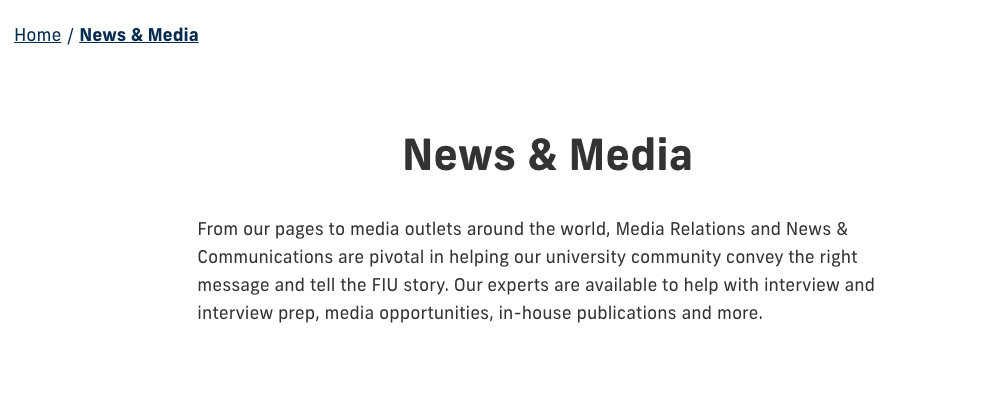Have you ever wondered when to use an ampersand (&) in FIU content? It's actually pretty simple. When crafting FIU-related content, understanding the proper use of an ampersand is key to maintaining consistency and following brand guidelines.
Using an ampersand when writing content
FIU content is written following the FIU Communications Style Guide, a complement to the AP Stylebook. The FIU Style Guide and AP Stylebook advise against using the ampersand instead of the word and.
You should generally stick with the word and instead of the ampersand in regular sentences and paragraphs. It’s more formal and easier to read.
However, there are instances when using an ampersand is allowed, such as when it appears in an official name or title, e.g., The College of Arts, Sciences & Education. It can also be used in tables, charts and other graphic elements where space is limited. The symbol helps keep things concise.

Using an ampersand on your website
Ampersands can be useful in web copy when used thoughtfully. Its size and visually streamlined appearance can be helpful on occasions where space is limited.

Always use ampersands in headings (H1s) and subheadings (H2s). It’s also useful in menu navigation items, where shorter titles are easier to read. Do not use ampersands in heading levels after H2.
You should never use ampersands in URLs. This includes your domain name and the addresses of your web pages.
The trick is to not overuse the ampersand. Always refer to the FIU Communications Style Guide and the Brand Style Guide before publishing your content. Using ampersands carefully keeps your copy professional, readable and in line with FIU’s communication standards and brand voice.

